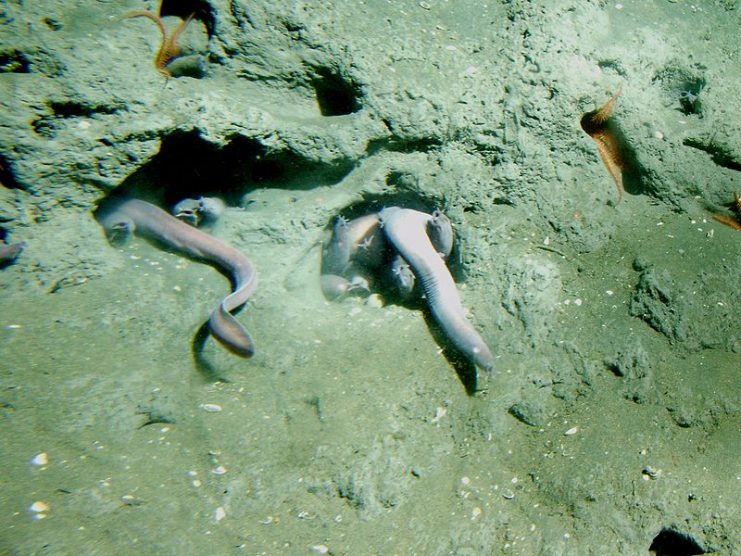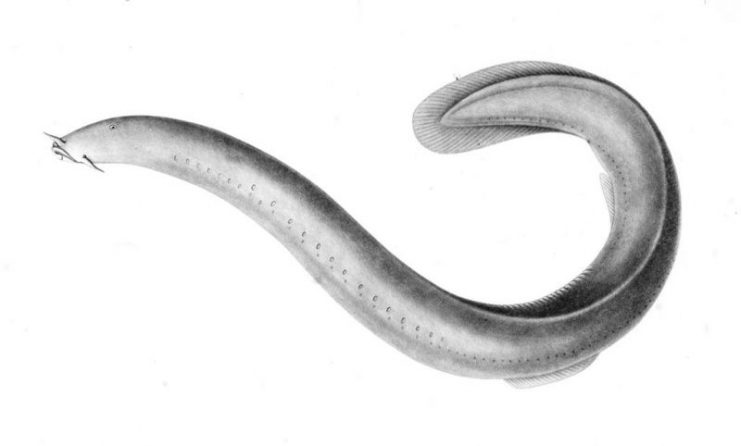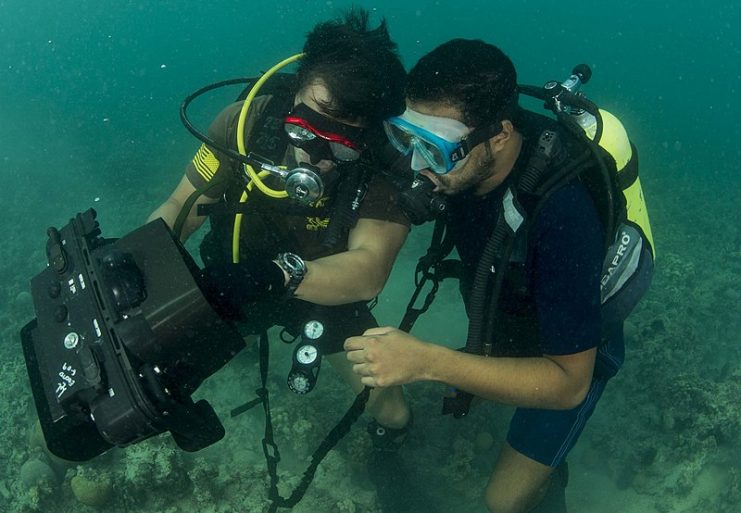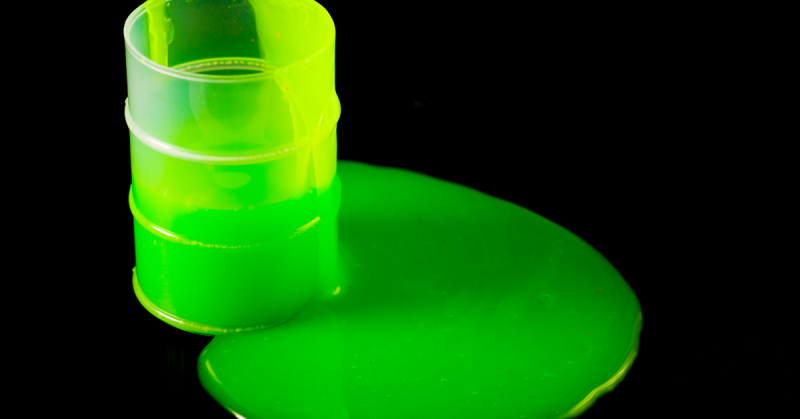Hagfish have an interesting method to avoid being eaten. When threatened, they can exude a slime that fills the mouths and gills of their attacker. That slime increases to 10,000 times its original volume when it comes into contact with sea water.
90 milligrams of the concentrated material inside the hagfish can become more than a liter of slime when it mixes with seawater. It’s known to researchers as one of the most interesting and unique biomaterials in the world.
Now the U.S. Navy is developing their own synthetic version of hagfish slime. According to Materials Engineer Ryan Kincer, who co-created the material, it has the potential to provide a tactical advantage since it can completely change the properties of water in seconds.

Researchers have noted that hagfish slime can act both as a Newtonian fluid and a non-Newtonian fluid, which is why the slime can incapacitate a predator by clogging its gills but the hagfish does not suffocate on its own slime. Newtonian fluids move away from a force applied to them, causing them to part when you move your hand through them. But non-Newtonian fluids become stiffer and more resistant when force is applied, like water mixed with corn starch.
The researchers found that hagfish slime acts like a non-Newtonian fluid when placed under suction, which is the method used by predators that would attack a hagfish. The more they try to suck in water to capture their prey, the more the slime produced by the hagfish blocks their gills and suffocates them.
But the hagfish has a neat trick in which it essentially ties itself in a knot to push the slime off itself. This motion lessens the viscosity of the slime and allows the hagfish to escape from its own defense.

There are two parts to the organic slime that comes from a hagfish, the thread and the mucin. The thread is coiled like a spring, and straightens out when it comes into contact with water. It’s similar to man-made Kevlar or spider-woven silk. The threads keep the material from drying out or hardening like mucus does.
The mucin in the slime binds with water and prevents it from flowing between the threads. According to Kincer, the interaction between the threads, mucin and seawater creates a “three-dimensional, viscoelastic network” that slowly dissipates over time.

Kincer is working with biochemist Josh Kogot to create a synthetic version of hagfish slime. They believe that it could be used to clog the propellers of enemy ships or suspicious boats, thereby stopping them dead in the water. The Navy currently uses plastic rope for the same purpose, but the rope is inefficient and risky to use.
Kogot says that the slime could also be used for protection from ballistic weapons, during firefighting, or to protect divers from sharks. He says that the “possibilities are endless.” Their goal is to create a non-lethal and non-kinetic form of defense for the military.

To create the artificial slime, Kincer and Kogot use E.coli bacteria to produce two proteins which are known as alpha and gamma. Those two proteins are then combined in a solution that creates the slime.
